World Heritage Cities
UNESCO has tagged 204 cities around world as World Heritage Cities. Mexico is the proud home of 10 cities that have received this title. This appointment has to meet certain criteria, such as representing a masterpiece, offering a unique cultural testimony, being an outstanding architectural model, or expressing cultural or historical authenticity.
Get to know a little more of these world renown Mexican cities.
Campeche, the only walled city
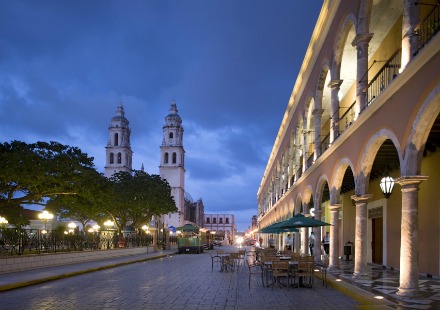 San Francisco de Campeche, founded in 1540 and located on the Gulf of Mexico coast, was named on December 1999 “Historical Fortified City of Campeche” by UNESCO.
San Francisco de Campeche, founded in 1540 and located on the Gulf of Mexico coast, was named on December 1999 “Historical Fortified City of Campeche” by UNESCO.
Why did it receive this title?
Thanks to its representative buildings with military architecture from the 17th and 18th centuries, its traditional houses, with Andalusian and Caribbean influences, and its urbanization model of a baroque colonial city. The only walled city in Mexico, Campeche has a 500 meter wall, two gates, two forts and eight fortresses, which are defensive buildings in a pentagon shape.
What to do?
- Take a stroll in downtown looking at the colorful decoration of mansions found throughout the aligned streets, which are full of legends and stories.
- Visit the main fortresses and forts, such as the San Jose, San Miguel and San Francisco Forts. The main fortresses, such as San Juan, San Carlos, Santa Rosa, among others, currently serve as exhibition halls, a botanical garden, museums and historical monuments.
- Get a taste of the flavorful shrimp and oyster cocktails, coconut shrimp and the traditional lime soup.
A must see
The Campeche Cathedral, the San Roman Temple, and the Edzna and Jaina archeological site
Mexico City, the country’s pillar
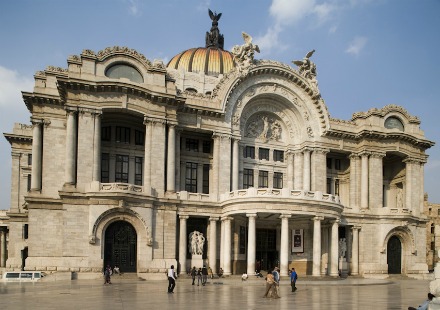 Home to the federal government powers, Mexico City is one of the oldest cities in the Americas. It received the title of World Heritage City in 1987 thanks to its historic downtown and its Xochimilco National Park.
Home to the federal government powers, Mexico City is one of the oldest cities in the Americas. It received the title of World Heritage City in 1987 thanks to its historic downtown and its Xochimilco National Park.
Why did it receive this title?
The Historic Downtown, named the city’s main square, was recognized for its historical and cultural value, for being an unmatched model of an urban setting and for witnessing the fusion of two cultures through its buildings, houses, streets and cathedrals.
In turn, Xochimilco possesses the title of World Heritage Site thanks to its man-made islands (floating gardens or small pieces of fertile land on a lake’s surface), which prove the exceptional work of its ancient inhabitants when building their homes in a less than favorable land.
What to do?
Take a walk on the city’s downtown and visit the historical monuments, such as the Fine Arts Palace, the Metropolitan Cathedral, the ancient Templo Mayor, an archeological site in the country’s capital, the National Palace and its streets surrounded by history and urbanization.
Getting on a trajinera (a boat decorated with embedded flowers) in Xochimilco, which sails peacefully through the canals, while enjoying the traditional dishes and the immense variety of flowers offered throughout the area. The rides on the trajineras are unforgettable.
A must see
Reforma Avenue, the Zocalo, San Ildefonso College, the Metropolitan Cathedral, the Templo Mayor, the Glazed Tile Home, the Chapultepec Castle, Coyoacan’s downtown, Xochimilco Eco-Park, the San Bernardino de Siena Parish Church and the National Museum of Anthropology.
Guanajuato: unmatched alleys and legends
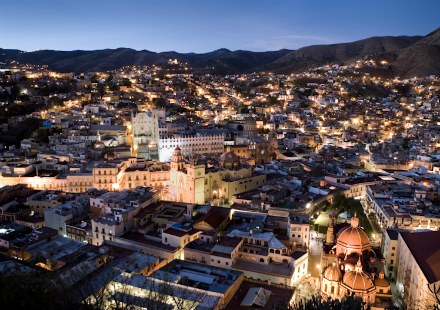 One of the most important cities during the viceroyalty period, Guanujuato played a key role during Mexico’s independence war. This city expands throughout the surrounding hills, from where you can see its cobblestone alleys, gardens, small squares, and its colorful facades that mix with the Indian and Hispanic culture.
One of the most important cities during the viceroyalty period, Guanujuato played a key role during Mexico’s independence war. This city expands throughout the surrounding hills, from where you can see its cobblestone alleys, gardens, small squares, and its colorful facades that mix with the Indian and Hispanic culture.
Why did it receive this title?
Because it possesses one of the most beautiful examples of baroque architecture in the Americas; for being an extraordinary example of architectural collections that incorporate the industrial and economic characteristics of a mining town.
What to do?
One must walk along its beautiful alleys listening to the traditional legends that narrate the city’s history, becoming an unforgettable experience. Visit its more prominent mines that still keep some tools used by workers that made of the city a reference point among the mining towns in Mexico. Try the state’s traditional dishes, such as miner’s enchiladas, which are made with corn tortillas filled with ranchero cheese and onion, and covered with guajillo chili and tomato sauce.
A must see
The University of Guanajuato, the Callejon del Beso (Alley of the Kiss), the Valenciana Mine, the Juarez Theater, the Alhondiga de Granaditas, the Pipila Museum, the Peace Square, the Olla Dam and the Mummies Museum.
Morelia, the former Valladolid
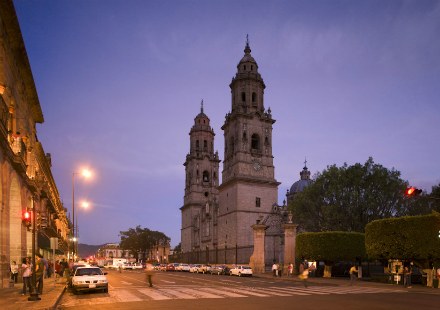 The most visited non-coastal destination in Mexico, the city of Morelia possesses 1,113 historical monuments, civil and religious, which makes the city a reference point of Mexico’s architectural beauty.
The most visited non-coastal destination in Mexico, the city of Morelia possesses 1,113 historical monuments, civil and religious, which makes the city a reference point of Mexico’s architectural beauty.
Why did it receive this title?
Due to its buildings’ features, the harmony found between the different architectural styles that make up its own unique style, a statement for Mexico’s architectural history.
What to do?
Take a walk on the Historic Downtown along its plazas, monuments, temples, mansions, museums and natural sites that will take you through the city’s past and present. Visiting Los Azufres, a relaxing natural site with hot springs, horseback riding through the forest and visiting its lagoon that reflects the moon’s light.
A must see
The Morelia Cathedral, the aqueduct, the Capuchinas Temple and former Convent, the Clavijero Palace, the Colonial Art Museum, the San Juan de Dios ancient hospital and the town of Patzcuaro.
Oaxaca
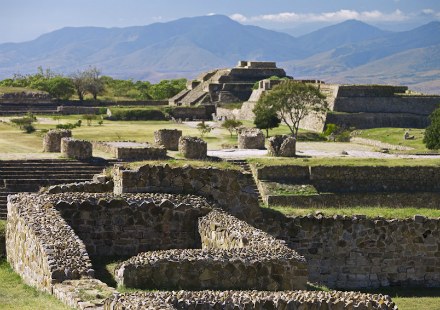 Formerly known as Antequera, Oaxaca de Juarez means in the Nahuatl language “in the nose of the leucaenas”. Its Historic Downtown and the Monte Alban archeological site were the reasons to name it a World Heritage City.
Formerly known as Antequera, Oaxaca de Juarez means in the Nahuatl language “in the nose of the leucaenas”. Its Historic Downtown and the Monte Alban archeological site were the reasons to name it a World Heritage City.
Why did it receive this title?
Since the 16th century, Oaxaca’s Historic Downtown conserves the perfectly aligned original arrangement, which resembles a chess board. The Monte Alban ceremonial center brings together a collection of pre-Hispanic monuments that offer wakes (on stone or pedestals) with hieroglyphics that commemorate events important to the city’s history.
What to do?
Taste the so-called tlayudas, large tortillas prepared with cheese. The emblematic and exquisite Oaxacan tamales await thousands of tourists to amaze them with their flavors. Take a walk along the Constitution Plaza, surrounded by elegant portals built since 1529, and enjoy a delicious and distinctive local coffee, a champurrado drink made of corn dough, a beer or any other typical local drink.
A must see
Monte Alban archeology site, the Santo Domingo Temple, the Nuestra Señora de la Soledad Lower Basilica, the city’s cathedral, the botanical garden and the Macedonio Alcala Walkway.
Puebla, the city of angels
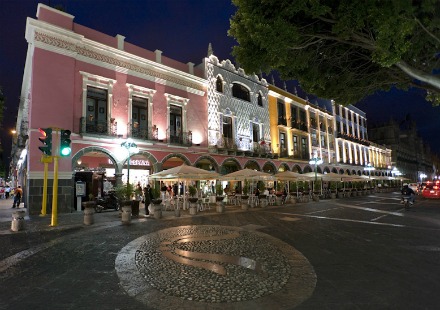 Nicknamed “The Americas’ Reliquary” due to its architectural beauty, the city of Puebla was, according to a legend, created and arranged by angels to be enjoyed by mortals.
Nicknamed “The Americas’ Reliquary” due to its architectural beauty, the city of Puebla was, according to a legend, created and arranged by angels to be enjoyed by mortals.
Why did it receive this title?
Its magnificent architectural monuments with Spanish colonial characteristics have help Puebla receive the title of World Heritage City. A par excellence religious center, the Puebla of Zaragoza Heroic city was the first settling site of the Spanish conquistadors that arrived to the region.
What to do?
Visit its downtown streets between buildings, facades, gardens and balconies that reflect its history and the passage of time. At night, one can got out and cruise through the so-called Angelopolis area, which offers a wide variety of cafeterias, bars and nightclubs. Visiting the Sapos Plaza will provide us a musical night listening to the tune of the traditional mariachi and enjoying the area’s beauty.
A must see
The Palafoxiana Library, the Puebla Cathedral, the Alfeñique House Museum, the City Hall, and the Amparo and Cholula Regional Museum.
Queretaro, development and beauty
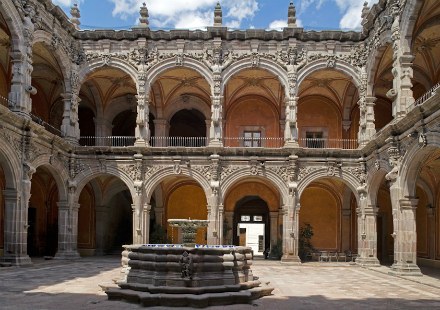 Named the “Lowlands’ Jewel”, the splendor of Santiago de Queretaro has consolidated this city as a very attractive place for domestic and international tourists.
Named the “Lowlands’ Jewel”, the splendor of Santiago de Queretaro has consolidated this city as a very attractive place for domestic and international tourists.
Why did it receive this title?
The extraordinary beauty of its architectural heritage that illustrates a colonial city, its dramatic history and immense cultural heritage that stems from a multi-ethnic population, were key characteristics to receive this title from UNESCO in 1996.
What to do?
Admire its numerous baroque-style buildings that date from the 17th and 18th centuries and are located on the city’s Historical Downtown, where its harmoniously arranged streets can be observed.
A must see
Los Arcos, the San Francisco Temple, the aqueduct, the cathedral, the Corregidora’s Home, the Zenea Garden, the Santa Cruz Temple and Convent, and the Casa de la Zacatecana Museum.
San Miguel de Allende, a colonial landscape
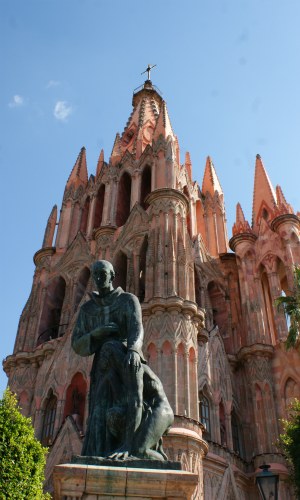 A city recently incorporated to UNESCO’s listing, San Miguel de Allende is characterized by its high level of conservation, authenticity and integrity.
A city recently incorporated to UNESCO’s listing, San Miguel de Allende is characterized by its high level of conservation, authenticity and integrity.
Why did it receive this title?
Thanks to the cultural and craftwork diversity, buildings and monuments of great historical value, which contribute culturally and architecturally to the Mexican baroque, and to its prominence during Mexico’s independence from Spain.
What to do?
Due to its unique beauty, going to the San Miguel Cathedral, with a Gothic and baroque style, is a must when visiting this city. Taste the delicious tumbagones, a crispy rolled desert made of wheat flower and covered with powdered sugar.
A must see
The Main Garden, the Casa Allende Historical Museum, the San Francisco Church, the Lavaderos, the Chorro Neighborhood and the Condes Home.
Tlacotalpan, an amazing Mexican site
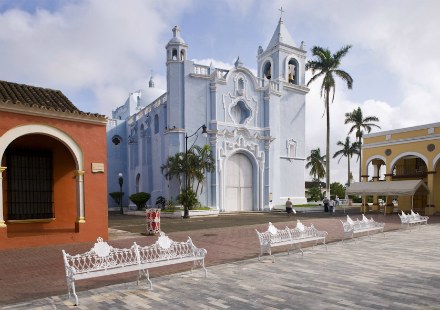 Considered by insiders and outsiders as the most traditional city in the state of Veracruz, Tlacotalpan is also a river port close to Gulf of Mexico coast.
Considered by insiders and outsiders as the most traditional city in the state of Veracruz, Tlacotalpan is also a river port close to Gulf of Mexico coast.
Why did it receive this title?
Named the Papaloapan Jewel, Tlacotalpan distinguishes itself due to the architecture of its Asian-style portals, and its landscape of wide streets that interweave with the decorating columns and arches. Its unique urban structure of great prominence and quality represents the combination of Spanish and Caribbean traditions.
What to do?
A boat ride on the Papaloapan River, which stands out due to its beauty and abundant wildlife. Visit its historical monuments that even with the passage of time maintain the vernacular expression of the neoclassic style. Take a walk along the portals and beautiful homes with vivid colors and tile roofs, which are found next to the Papaloapan River.
A must see
The Zaragoza Plaza, the Candelaria Temple, the Hidalgo Park, the Agustin Lara Cultural Center and the San Cristobal Temple.
Zacatecas, a colonial charm
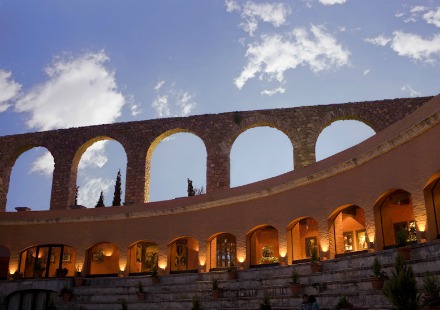 A mining city adapted to its valleys and mountains, Zacatecas reflects its attractiveness through its beautiful buildings, which are real masterpieces.
A mining city adapted to its valleys and mountains, Zacatecas reflects its attractiveness through its beautiful buildings, which are real masterpieces.
Why did it receive this title?
Its architecture, urban arrangement and the irregular alignment of its streets, make up the splendor of its Historic Downtown, recognized by UNESCO.
What to do?
Cross Zacatecas downtown on the cable railway, admiring the beautiful monuments made of the local pink quarry. Tour the legendary Eden Mine on the subway that reaches Earth’s deepest points, passing by key sites, such as a chapel, the Minerales Museum and other interesting sites.
A must see
Fatima Church, the Gonzalez Ortega Market, the cathedral, the Eden Mine, Guadalupe Church, the former San Pedro bullfighting ring, and the former San Agustin Temple.



